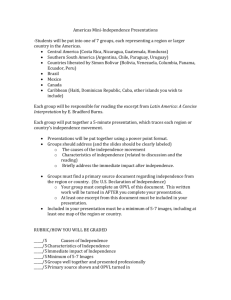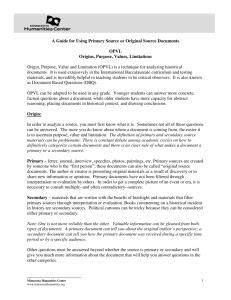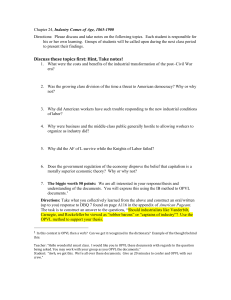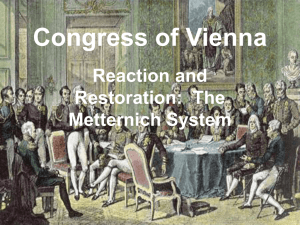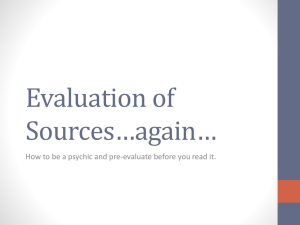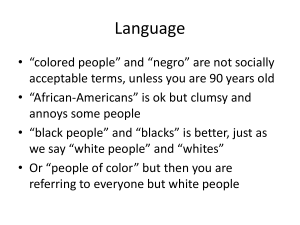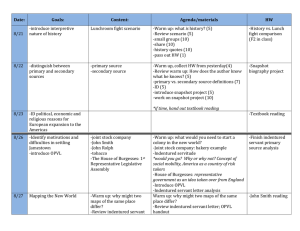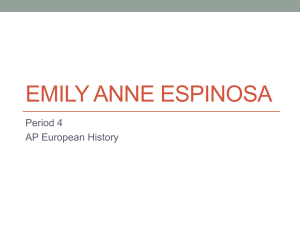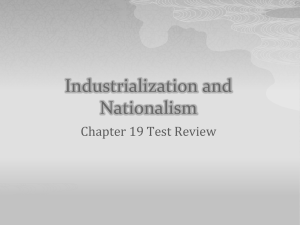The Study of History for IB
advertisement
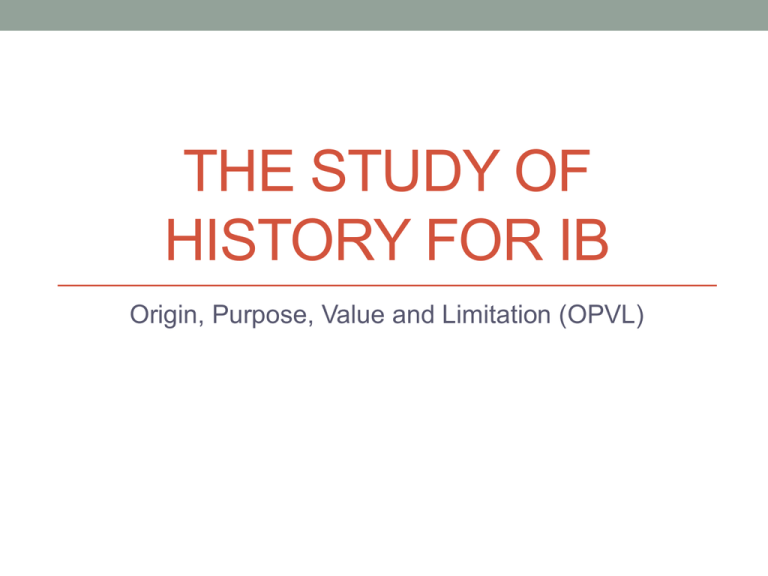
THE STUDY OF HISTORY FOR IB Origin, Purpose, Value and Limitation (OPVL) OPVL • OPVL- origin, purpose, value and limitation is a technique for analyzing historical documents. • It is used extensively in the International Baccalaureate Curriculum and testing materials • Incredibly helpful in teaching students to be critical observers Origin • In order to analyze a source, you must first know what it is. Sometimes not all of these questions can be answered. • The more you do know about where a document is coming from, the easier it is to ascertain purpose, value and limitation. • The definition of primary and secondary source materials can be problematic. There is constant debate among academic circles on how to definitively categorize certain documents and there is no clear rule of what makes a document a primary or a secondary source. Origin • Primary – letter, journal, interview, speeches, photos, paintings, etc. Primary sources are created by someone who is the “first person”; these documents can also be called “original source documents. The author or creator is presenting original materials as a result of discovery or to share new information or opinions. Primary documents have not been filtered through interpretation or evaluation by others. In order to get a complete picture of an event or era, it is necessary to consult multiple--and often contradictory--sources. • • Secondary – materials that are written with the benefit of hindsight and materials that filter primary sources through interpretation or evaluation. Books commenting on a historical incident in history are secondary sources. Political cartoons can be tricky because they can be considered either primary or secondary. Origin • Other questions must be answered beyond whether the source is primary or secondary and will give you much more information about the document that will help you answer questions in the other categories. • • • Who created it? • • Who is the author? • • When was it created? • • When was it published? • • Where was it published? • • Who is publishing it? • • Is there anything we know about the author that is pertinent to our evaluation? Purpose • This is the point where you start the real evaluation of the piece and try to figure out the purpose for its creation. • You must be able to think as the author of the document. At this point you are still only focusing on the single piece of work you are evaluating. • • • Why does this document exist? • • Why did the author create this piece of work? What is the intent? • • Why did the author choose this particular format? • • Who is the intended audience? Who was the author thinking would receive this? • • What does the document “say”? Value • Now comes the hard part. Putting on your historian hat, you must determine: • Based on who wrote it, when/where it came from and why it was created…what value does this document have as a piece of evidence? • This is where you show your expertise and put the piece in context. Limitations • The task here is not to point out weaknesses of the source, but rather to say: • at what point does this source cease to be of value to us as historians? • With a primary source document, having an incomplete picture of the whole is a given because the source was created by one person (or a small group of people?), naturally they will not have given every detail of the context. • Do not say that the author left out information unless you have concrete proof (from another source) that they chose to leave information out. • Also, it is obvious that the author did not have prior knowledge of events that came after the creation of the document. Do not state that the document “does not explain X” (if X happened later). • Being biased does not limit the value of a source! If you are going to comment on the bias of a document, you must go into detail. Who is it biased towards? Who is it biased against? What part of a story does it leave out? What part of the story is MISSING because of parts left out? Limitation • Being biased does not limit the value of a source! • If you are going to comment on the bias of a document, you must go into detail. • Who is it biased towards? • Who is it biased against? • What part of a story does it leave out? • What part of the story is MISSING because of parts left out? OPVL • See chart handout: Example • Source A: Klemens Von Metternich, Confessions of Political Faith, 1820 • The progress of the human mind has been extremely rapid in the course of the last three centuries. This progress having been accelerated more rapidly than the growth of wisdom (the only counterpoise to passions and to error); a revolution prepared by the false systems, the fatal errors into which many of the most illustrious sovereigns of the last half of the eighteenth century fell, has at last broken out in a century of advanced knowledge, and enervated by pleasure, in a country inhabited by a people whom one can only regard a frivolous, from the facility with which they comprehend and the difficulty they experience in judging calmly… OPVL • Origin: • Source A was created and authored by Klemens Von Metternich in 1820. It is an excerpt from his Memoirs. The author was the Chancellor of the Austrian Empire during the Napoleonic Wars and was the architect of not only the Congress of Vienna but the system of returning Europe to a more conservative line. OPVL • Purpose: • The source is in fact an excerpt from his Memoirs and is specifically a memorandum to Tsar Alexander I. The source was written in 1820 but published in 1881. Metternich’s intent is obviously to discuss with the Tsar the problems, as he sees it related to revolutionary thought and what that thought did to society. • The documents specifically says that the human mind has “progressed” too fast and in doing so and destroyed some of the sovereigns in Europe. The progress he states was made without wisdom which has caused revolutions. • He very much feels that wisdom is the only check on the passions that have spilled forth in Europe. He also points out that this thought has occurred in one country “inhabited by a people one can only regard as frivolous…”. It seems likely he is referring to France, since the revolution began there. OPVL • Value: • The source offers a personal insight into mind of one of the key reactionary figures after the French Revolution. It provides proof of how the conservative elements in society viewed the liberal and revolutionary ideas. Since it is a conversation with the Tsar, this can show us how related in the cause to suppress revolutionary ideas both Austria and Russia were. Metternich wants to be seen as wise in his definition of revolutionary thought. Helps provide a justification in a sense for the aims of the Congress of Vienna. OPVL • Limitations: • Since this is a conversation in 1820, after the Congress of Vienna and before any of the major revolts in Europe occur, it is likely not a perfect representation of what the mainstream thoughts were regarding revolutionary ideas. Metternich seems to be highlighting his wisdom to show justification for what was obviously a harsh return to the old order. He is also discussing these ideas with Tsar Alexander which could suggest that Metternich is saying to him what he wants to hear, likely to get Russia on board with Austria’s wishes.
